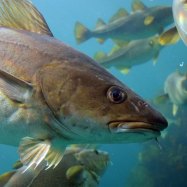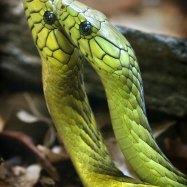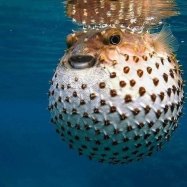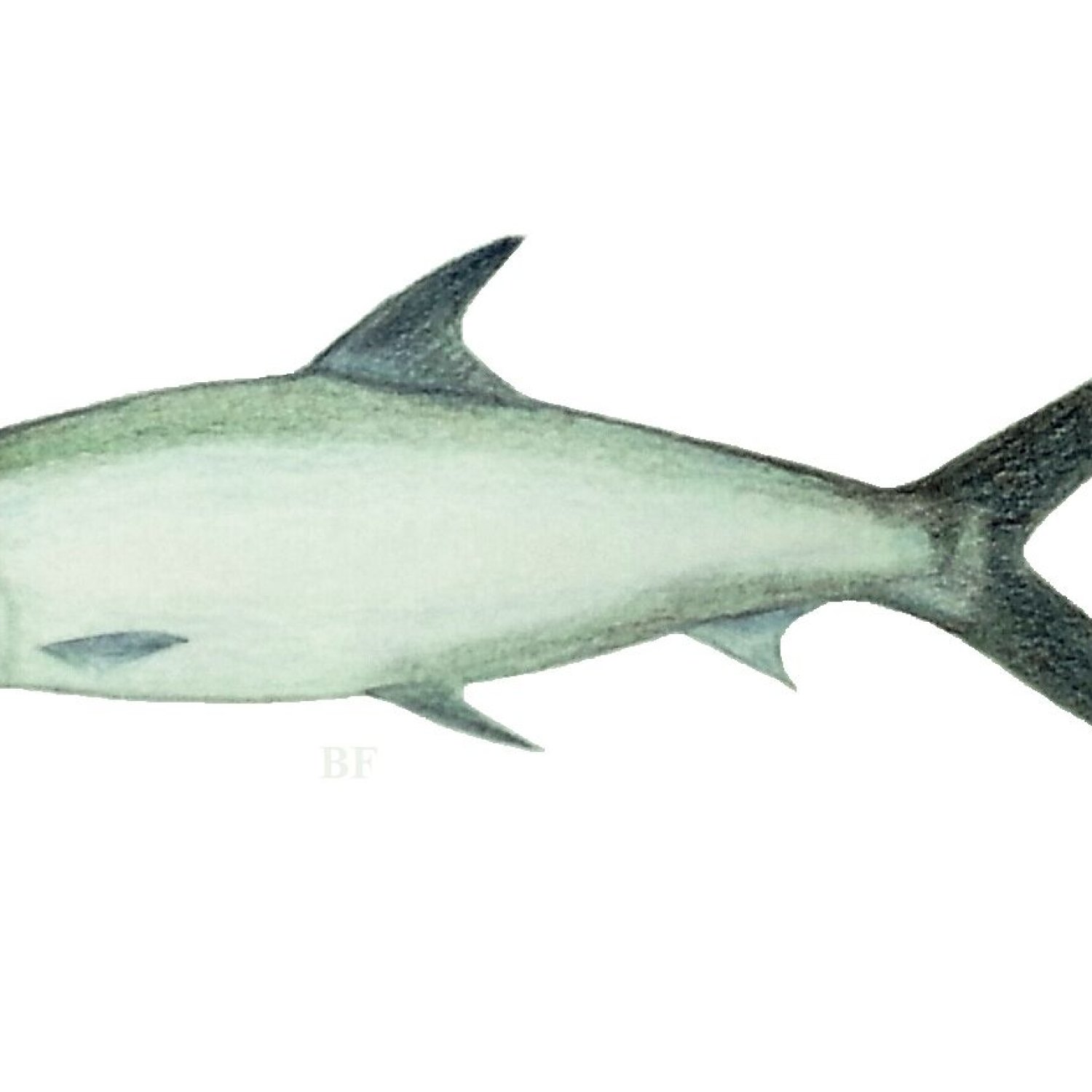
Milkfish
Up to 1.8 meters
Milkfish, also known as bangus, is a popular fish found in the salty waters of the Philippines. They can grow up to 1.8 meters in length and have an elongated, laterally compressed body shape. With their mild, white meat, they are a favorite among seafood lovers. But beware of their powerful jumps when caught! #milkfish #bangus #seafoodlover #Philippines
Animal Details Summary:
Common Name: Milkfish
Kingdom: Animalia
Habitat: Coastal waters, estuaries, and lagoons
The Wandering Beauty of Milkfish: Discovering the Unsung Fish of the Ocean
The vast world of the ocean is home to numerous fascinating creatures, from the majestic whales to the colorful schools of fish. Yet, among these well-known and popular marine animals, there is one particular fish that stands out for its unique characteristics and its seemingly unnoticed existence - the Milkfish.Known by its scientific name Chanos chanos, the Milkfish is a unique and intriguing species that has captured the attention of marine biologists and fish enthusiasts alike. From its habitat to its feeding methods, this article will delve into the remarkable features of this unsung hero of the ocean Milkfish.
Ambassadors of the Ocean
The Milkfish belongs to the Animalia kingdom, Chordata phylum, and Actinopterygii class, showcasing its ancestry from the highly diverse group of ray-finned fishes. It is classified under the Gonorynchiformes order and belongs to the Chanidae family, consisting of only two species - the Milkfish and the White Goby.These magnificent creatures can be found in the coastal waters, estuaries, and lagoons of the Indo-Pacific region, making them natural ambassadors of the ocean. Though their country of origin remains unknown, they are highly prevalent in countries such as the Philippines, Indonesia, and Taiwan.
Adapting to the Seawater
One of the most intriguing features of the Milkfish is its ability to adapt and thrive in various water conditions. They have a unique characteristic that enables them to live in both freshwater and full-strength seawater. This adaptation is called "euryhalinity," which means they have the capability to tolerate a wide range of salinity levels.Due to this remarkable attribute, Milkfish can wander from one body of water to another, making them highly resilient and flexible creatures. Their high tolerance to varying salinity levels makes them suitable for aquaculture, making them one of the most sought-after fishes in the commercial fish farming industry Mandarin Rat Snake.
The Herbivorous Diet of Milkfish
Feeding habits play a crucial role in understanding an animal's behavior and lifestyle. Milkfish are known to have a herbivorous diet, which means they primarily feed on plants. They have specially adapted gill rakers that act as a filtering system, allowing them to consume a wide variety of plant matter.In their natural habitat, Milkfish feed on algae, seaweed, and detritus found in the water. However, in captivity, they are also fed a mixture of leafy greens, vegetables, and pelleted foods to provide them with the necessary nutrients for growth and reproduction.
The Elegance in Appearance
Milkfish may not be known for their distinct colors, but they have a charm of their own in terms of appearance. Their elongated and laterally compressed body gives them a sleek and elegant appearance, making them stand out among other fish species. They can grow up to 1.5 to 1.8 meters in length, making them one of the largest herbivorous fish in the ocean.Their skin coloration is also unique, with a blue-greenish hue on their dorsal side, and a silver color on their ventral side. This coloration helps them camouflage in the water, effectively protecting them from potential predators.
The Role of Milkfish in the Ecosystem
As herbivorous creatures, Milkfish play a significant role in maintaining the balance of marine ecosystems. They are considered "keystone" species, meaning their presence or absence can heavily impact the overall health and well-being of an ecosystem.Milkfish prevent the overgrowth of algae, which can block sunlight and deplete oxygen levels in the water. Their constant grazing on algae also prevents the spread of harmful algae, known as "red tide," which can be lethal to other marine life.
Their migratory behavior also helps with seed dispersal and nutrient cycling in the ocean, making them valuable contributors to the marine ecosystem.
The Threats to the Wandering Beauty
Despite their importance in the marine ecosystem, Milkfish face numerous threats that threaten their survival. One of the most significant dangers is overfishing, particularly during their migration periods, which can result in declining population numbers.The destruction of their natural habitats, such as coral reefs and mangroves, also poses a significant threat to Milkfish. These ecosystems serve as essential nurseries for young Milkfish, and their destruction can result in a decline in reproduction rates.
The Future of Milkfish
Efforts are being made to preserve the Milkfish population and their habitats. Various conservation initiatives have been implemented, such as limiting commercial fishing during their migration periods and establishing protected areas for their natural habitats.In addition, the increasing popularity of Milkfish in commercial farming has helped decrease the pressure on wild populations. The sustainable production of Milkfish through aquaculture also provides a steady income for local fishermen, helping to reduce their dependence on ocean resources.
The Unsung Beauty of the Ocean
In conclusion, Milkfish may not be as well-known as other marine animals, but their unique characteristics and vital role in the ecosystem make them a species worth noticing. From their ability to adapt to varying water conditions to their elegant appearance, Milkfish showcase the wonders of nature.It is imperative to continue efforts in preserving this wandering beauty of the ocean to maintain a balanced and healthy marine ecosystem. As humans, we must recognize the importance of every creature, no matter how small or seemingly insignificant they may seem. Let us appreciate the unsung beauty of the ocean, and do our part in preserving it for the generations to come.

Milkfish
Animal Details Milkfish - Scientific Name: Chanos chanos
- Category: Animals M
- Scientific Name: Chanos chanos
- Common Name: Milkfish
- Kingdom: Animalia
- Phylum: Chordata
- Class: Actinopterygii
- Order: Gonorynchiformes
- Family: Chanidae
- Habitat: Coastal waters, estuaries, and lagoons
- Feeding Method: Herbivorous
- Geographical Distribution: Indo-Pacific region
- Country of Origin: Unknown
- Location: Seawater
- Animal Coloration: Blue-greenish on the dorsal side, silver on the ventral side
- Body Shape: Elongated and laterally compressed
- Length: Up to 1.8 meters
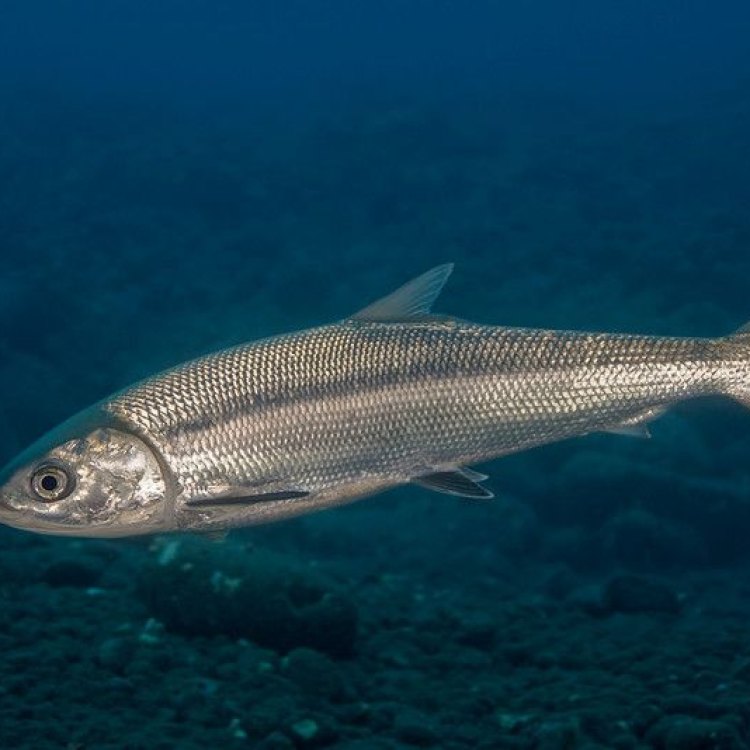
Milkfish
- Adult Size: Up to 1.8 meters
- Average Lifespan: 5-10 years
- Reproduction: Sexual
- Reproductive Behavior: Spawning in marine waters
- Sound or Call: No specific sound or call
- Migration Pattern: Coastal migration patterns
- Social Groups: Generally solitary or form small schools
- Behavior: Active during daytime, hiding in vegetation or structures during the night
- Threats: Overfishing, habitat destruction, pollution
- Conservation Status: Not assessed by IUCN
- Impact on Ecosystem: Ecologically important as a prey species and for nutrient cycling
- Human Use: Commercial fishing, aquaculture
- Distinctive Features: Forked tail, large eyes
- Interesting Facts: Milkfish are often used in aquaculture due to their fast growth rate and adaptability to captivity.
- Predator: Sharks, dolphins, seabirds

Chanos chanos
The Mighty Milkfish: A Fascinating Fish with Unique Characteristics
The ocean is home to countless amazing creatures, each with its own unique features and behaviors. One such fascinating fish is the milkfish, scientifically known as Chanos chanos. This article will take you on a journey to discover the distinctive characteristics of this sea creature, from its size and lifespan to its impact on the ecosystem and human use.The milkfish, also known as “bangus” in the Philippines and “bandeng” in Indonesia, is a species of ray-finned fish that belongs to the Chanidae family PeaceOfAnimals.Com. It can be found in tropical and subtropical waters of the Indian and Pacific Oceans, from the Arabian Gulf to Western Australia and from East Africa to the western Pacific Ocean. It is a highly valued food fish in many countries, and its unique features make it a popular fish for both commercial fishing and aquaculture.
So, let’s dive into the world of the mighty milkfish and uncover what sets it apart from other fish in the sea.
Size and Lifespan
Milkfish are known to be quite large, with adults reaching an impressive length of up to 1.8 meters. With a slender and elongated body, they can weigh up to 14 kilograms. However, the average size of a milkfish is around 1 meter in length.
As for its lifespan, milkfish can live anywhere between 5 to 10 years. This may seem short compared to other fish species, but their fast growth rate and adaptability to different environments make up for their relatively short lifespan Megamouth Shark.
Reproduction
Milkfish reproduce sexually, with males and females releasing their eggs and sperm simultaneously in the water during their breeding season. This method of reproduction is known as broadcast spawning, and it usually occurs in open marine waters.
During the breeding season, the female milkfish can release millions of eggs, which are fertilized by the males' sperm. The eggs then hatch within 24 hours, and the larvae grow quickly, feeding on plankton and small crustaceans.
Interestingly, milkfish have a unique reproductive behavior where they can delay their spawning if environmental conditions are not suitable for breeding. This ability allows them to ensure the survival of their offspring by waiting for better conditions.
Migration
Milkfish have a coastal migration pattern, often moving between shallow and deep waters along the coastline. They are known to travel in large schools during their migration, similar to other fish species like sardines and herring.
This migration pattern is vital for milkfish as it allows them to find suitable breeding grounds and food sources. It also helps in the dispersal of their offspring, ensuring the sustainability of the population.
Behavior
Milkfish are diurnal creatures, meaning they are most active during the day and rest at night. They are fast swimmers and have been observed to reach speeds of 60 km/hour. During the day, they can be found swimming near the water surface, but at night, they seek shelter in vegetation or any available structure to hide from predators.
They are also known to be quite adaptable, thriving in both freshwater and saltwater environments. This adaptability is one of the reasons why milkfish are commonly used for aquaculture.
Threats and Conservation Status
Like many other marine species, milkfish face several threats that affect their population. Overfishing is a significant concern for milkfish, as they are heavily targeted for commercial fishing. Additionally, habitat destruction and pollution also pose a threat to their survival.
Despite these challenges, milkfish have not yet been evaluated by the International Union for Conservation of Nature (IUCN). However, measures are being taken in many countries to conserve their population and ensure sustainable fishing practices.
Impact on the Ecosystem
Milkfish play a vital role in the ocean's ecosystem as a prey species and for nutrient cycling. They are a food source for larger marine animals such as sharks, dolphins, and seabirds. Their larvae also contribute to the nutrient cycle as they consume plankton and other microscopic organisms.
Furthermore, milkfish are often used in polyculture, a farming practice that involves cultivating multiple species in the same aquaculture system. In this method, milkfish are grown alongside shrimps, prawns, and other fish, creating a sustainable ecosystem and reducing the impact on the environment.
Human Use
Milkfish are not only valued in the wild but are also a significant source of food for humans. They are considered a delicacy in many countries, including the Philippines, Indonesia, and Taiwan. The fish is known for its tender meat and is commonly used in dishes like "sinigang" and "gindara."
Apart from being a food source, milkfish are also extensively used in aquaculture. Due to their fast growth rate and adaptability, they are an ideal species for fish farming and can be harvested year-round.
Distinctive Features
Milkfish have several unique physical features that set them apart from other fish. One of the most noticeable features is their forked tail, which allows them to move quickly and efficiently through the water. This unique tail shape also helps with their evasive swimming maneuvers when pursued by predators.
Additionally, milkfish have large eyes, which are essential for their diurnal activity and ability to swim at high speeds. Their eyesight helps them to detect potential threats and find food in the water.
Interesting Facts
Milkfish are not only unique but also have some fascinating facts that make them stand out. Here are a few interesting things about the mighty milkfish:
- Milkfish can survive in both freshwater and saltwater environments, making them euryhaline fishes.
- The fish is highly sought after in Southeast Asia, with the Philippines being the top producer of milkfish in the world.
- Milkfish is the national fish of the Philippines and is featured on the country's one-peso coin.
- The milkfish has been used as a means of transportation in some Pacific island cultures, where people would hang on to the fish's dorsal fins to be pulled through the water.
Predators
As with any other fish species, milkfish also have their share of predators in the ocean. Sharks, dolphins, and seabirds are some of the main predators of milkfish, preying on them both as juveniles and adults. This is why milkfish seek shelter in vegetation and structures at night to avoid becoming a meal for their predators.
In conclusion, the milkfish is a unique and fascinating fish species that plays an important role in the ocean's ecosystem. From its distinctive features to its impact on human use and the environment, this sea creature has much to offer and continues to be a significant part of our marine life. Let us hope that efforts towards conservation can ensure the sustainability of the milkfish population for generations to come.

The Wandering Beauty of Milkfish: Discovering the Unsung Fish of the Ocean
Disclaimer: The content provided is for informational purposes only. We cannot guarantee the accuracy of the information on this page 100%. All information provided here may change without prior notice.


